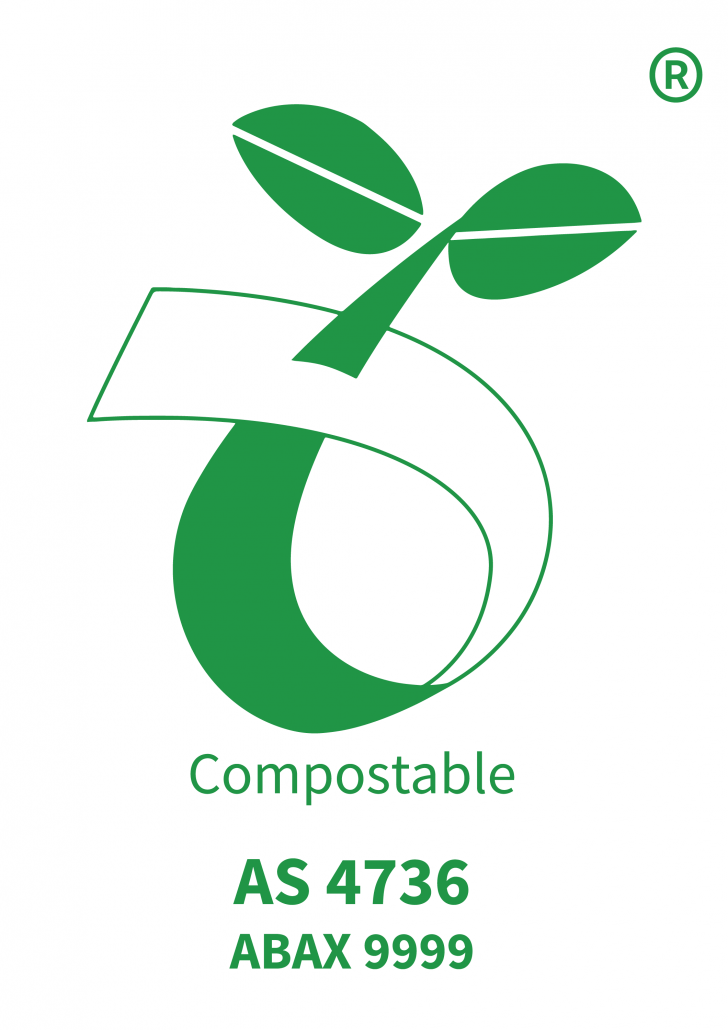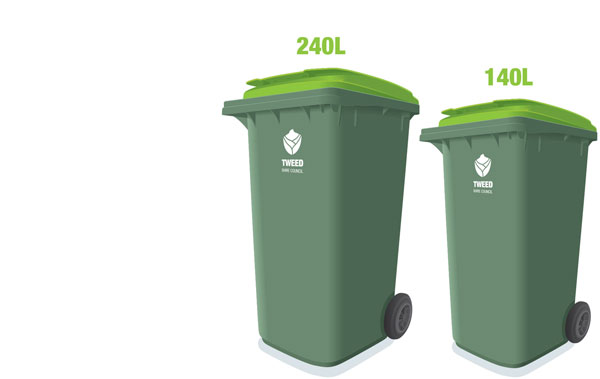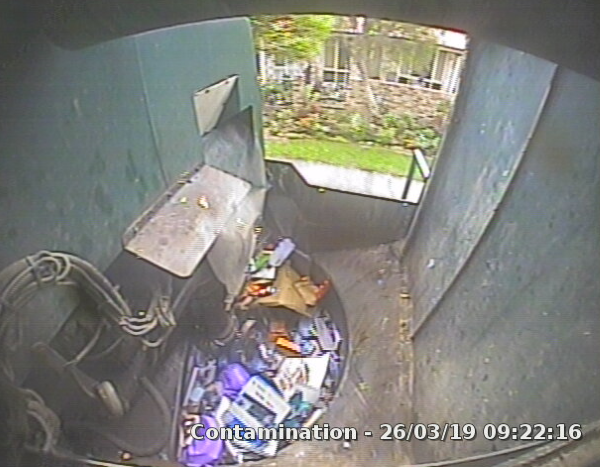Green lid bins - food and garden waste
Changes to your green lid bin
Only food scraps and garden waste can go in your green bin.
Fibre-based products such as paper, cardboard and teabags will no longer be accepted. This includes:
- cardboard
- newspaper (unless it is used to line your kitchen caddy)
- paper towel
- tissue
- teabags.
These changes mean that compost created from the contents of our green bins is nutrient rich and helps create healthy soil.
These changes are a directive from the NSW Environment and Protection Authority.
Frequently asked questions
Why have these changes been made?
Councils and our commercial compost facilities need to comply with state government legislation and policy - the NSW EPA’s Compost Order and the NSW Position Statement on FOGO.
Recent testing has also found that many fibre-based products claim to be compostable but can contain chemicals known as polyfluoroalkyl (PFAS) that cause harm to our environment.
Keeping those potentially harmful items out of our green bins means that we can create high-quality commercial compost to support food production and soil health.
To find out more about how the contents of green bins across the region is processed into commercial compost visit Soilco.
Why make the changes now?
Recent testing has found that many fibre-based products claim to be compostable but can contain chemicals known as polyfluoroalkyl (PFAS). These items can contain substances such as that cause harm to our environment.
Keeping these items out of our green bins means that we can create high-quality commercial compost to support food production and soil health.
What are PFAS?
PFAS, short for Per- and Polyfluoroalkyl Substances, are a group of manufactured chemicals that have been used in industry and consumer products.
Which bin do I put fibre-based products in now?
Non soiled fibre-based products that are recyclable should go in your yellow lid recycling bin.
Any soiled fibre-based products such as pizza boxes, tissue or paper towel belong in your red bin.
If you’re ever unsure which bin to use, use Council’s helpful online tool, Waste Wizard.
What bin or caddy liners can I use?
What bin or caddy liners can I use?
Bin liners (bin bags) placed in your green lid organics bin must be compostable to Australian standard AS4736. Look out for the seedling logo with this number when purchasing.
If you've used newspaper to line your kitchen caddy that is also allowed but this is the only exception to the rule.

But what if a product says its plant based or biodegradable?
These products aren't compostable so they can't go in your green bin.
Many fibre-based products now also claim to be compostable, but they aren’t either. This means when we collect food and garden waste and create compost from it, it can actually harm the environment and could affect our health.
To be certain, always look for the seedling logo for Australian standard AS4736.
What if I put the wrong thing in my green bin?
Although it’s important that people do the right thing, Council understands that this sort of change may take a little time to get used to. The next few months will be considered a transitional phase as we adapt to these changes, after that time you will be notified if you need to do better.

Council’s green lid organic waste collection service is available in urban areas for houses and duplexes - find out if it's available in your area by calling us on 02 6670 2400.
An optional user-pays service is available for businesses and multi-unit blocks in some areas (and rural areas if you're on a collection route).
- Bins are collected every week (if available in your area).
- Extra green bins can be requested (additional cost).
- 140L and 240L sizes.
To make a request or find out more, call 02 6670 2400 or email resourcerecovery@tweed.nsw.gov.au
What goes in my green bin?
Food waste
All food waste:
- Biscuits and cake
- Bread
- Cereal
- Cheese
- Citrus
- Coffee grounds
- Corn cobs
- Fish and fish bones
- Fruit peels and cores
- Left overs
- Meat bones
- Meat scraps
- Onions and onion skins
- Oyster shells
- Pasta
- Pet food
- Prawn heads and shells
- Rice
- Sauces
- Takeaway
- Vegetable peelings
Garden waste
- Grass clippings
- Flowers
- Leaves
- Mulch
- Palm fronds
- Prunings
- Small sticks and twigs (max 60cm long x 10cm wide)
- Weeds
What doesn't go in your green bin
- Fibre based products such as paper, cardboard or teabags
- Plastic containers
- Coffee cups or lids (even if they say compostable)
- Kitty litter
- Nappies
- Pet waste
- Plastic bags (including biodegradable and degradable plastic bags, they are not compostable)
- Foam
- Processed timber
- Soiled pet bedding (including straw or newspaper)
- Soft plastics (such as cling wrap)
- Hygiene products
- Large quantities of soil
- Hazardous materials (paint, chemicals, asbestos)
Note: Compostable plastic bags can be used in your green bin if they are Australian standard AS4736 - they are usually bright green.
Download the A to Z organics guide(PDF, 350KB) for a printable overview of what can and can't go in your green lid organics bin.
What bin or caddy liners can I use?

Bin liners (bin bags) placed in your green lid organics bin must be compostable to Australian standard AS4736. Look out for the seedling logo when purchasing.
What happens if I put the wrong item in the bin?
Collection trucks are fitted with cameras. Bins with incorrect items will be tagged and left behind (and will only be collected once the contamination has been removed.)
Council’s bin inspector also checks bins and provides feedback to residents about what can and can't go in each bin.

Where does my green waste go?
Green bin items are turned into compost.
Organics are brought to the Tweed Organics Processing Facility at Stotts Creek Resource Recovery Centre. It is pre-sorted, then processed on site.
The end result is high quality compost used by residents, local farmers and for landscape projects.
You can find out more about how your green bin contents is made into commercial compost via North East Waste's Let's Get our Scrap Together! campaign.
What if my bin smells?
Generally, your green bin should not smell as it is collected every week.
In summer it’s a good idea to put prawn peelings, meat or fish in the freezer until bin day.
For more helpful information download our Fact sheet: 3 Bin System - Tips for summer(PDF, 663KB)
Kitchen caddies
Use a benchtop kitchen caddy to collect your food scraps each day (recycled ice cream containers make a great benchtop bin).
If you’re a new Tweed resident (rate payer) you can collect a kitchen caddie free from Council, call 02 6670 2400 to arrange pickup.
Caddie liners: bin or caddie liners (bin bags) placed in your green lid organics bin must be compostable to Australian standard AS4736. Look out for the seedling logo when purchasing.
Compost bins
 Turn your food scraps into garden compost - what you don’t eat, your garden will!
Turn your food scraps into garden compost - what you don’t eat, your garden will!
You can order a variety and sizes of compost bins online (search compost bins) or purchase at local hardware stores.
Keep your bin in a sunny area in your yard. Over time your kitchen scraps and garden offcuts will break down and turn into good quality soil.
Worm farms
You can buy worms and worm farms online, from garden centres and some hardware stores. They come in lots of sizes, some are small and suitable for apartment living.
Composting worms are either Tigers, Reds or Blues - they can eat twice their body weight in food and can live in the moist conditions of your worm farm (unlike garden worms that will not survive).
Buy a box of 1,000 worms to start your farm, they will naturally multiply in a few months.
Set your worm farm up in a shaded, cool place. Cover them with damp newspaper or wet hessian, to keep the light out and moisture in. Make sure the lid and fly-guards are in place to keep out unwanted insects.
Over time worms and microbes will break down your food scraps into soil for your garden.
Download our Worm farm guide(PDF, 758KB)
Other composting systems